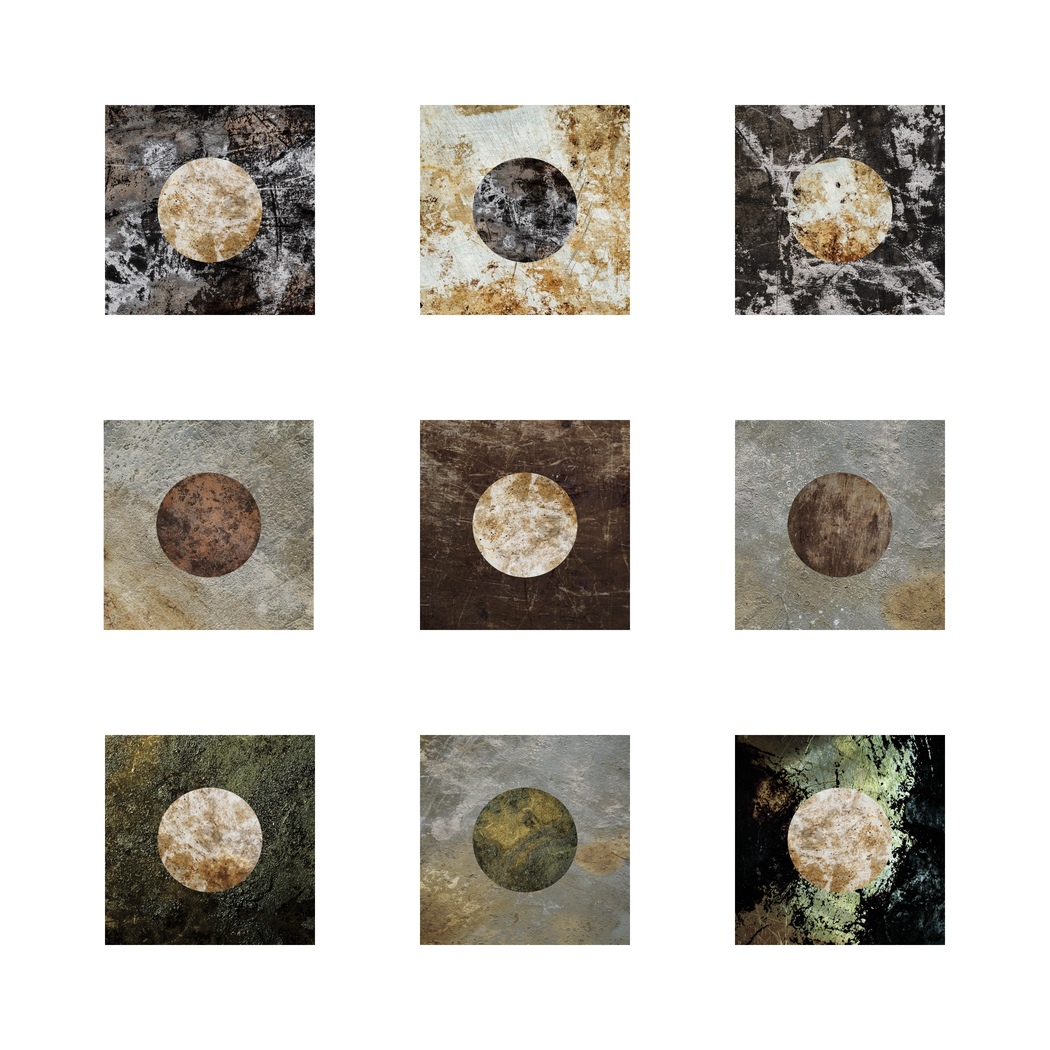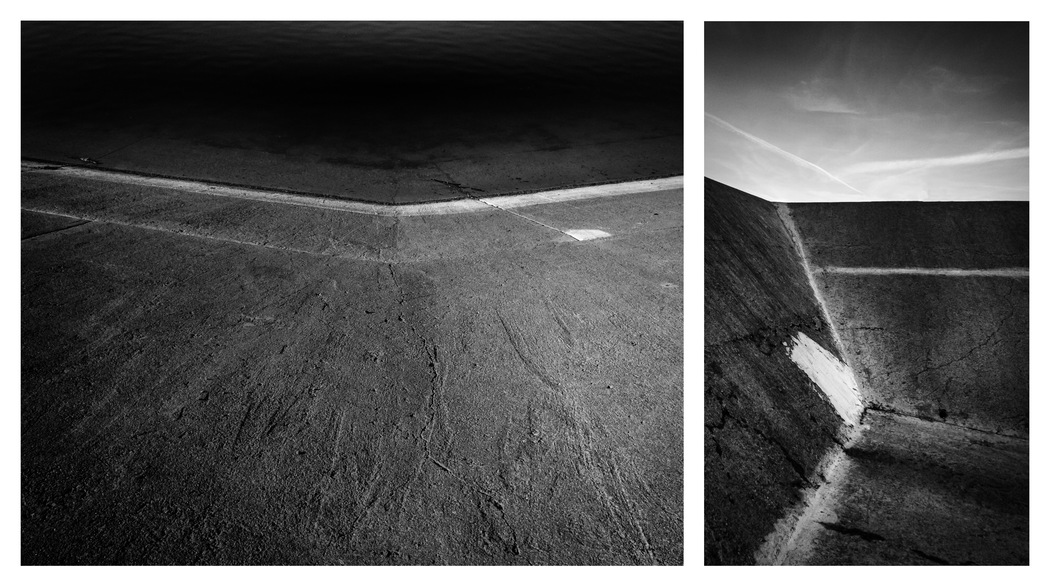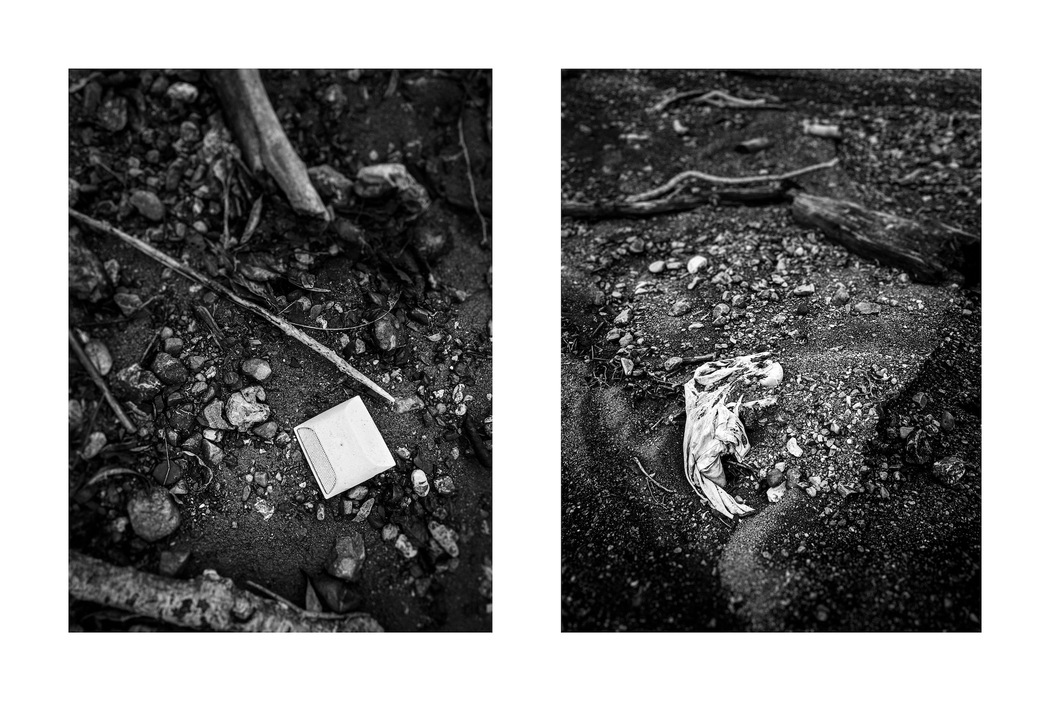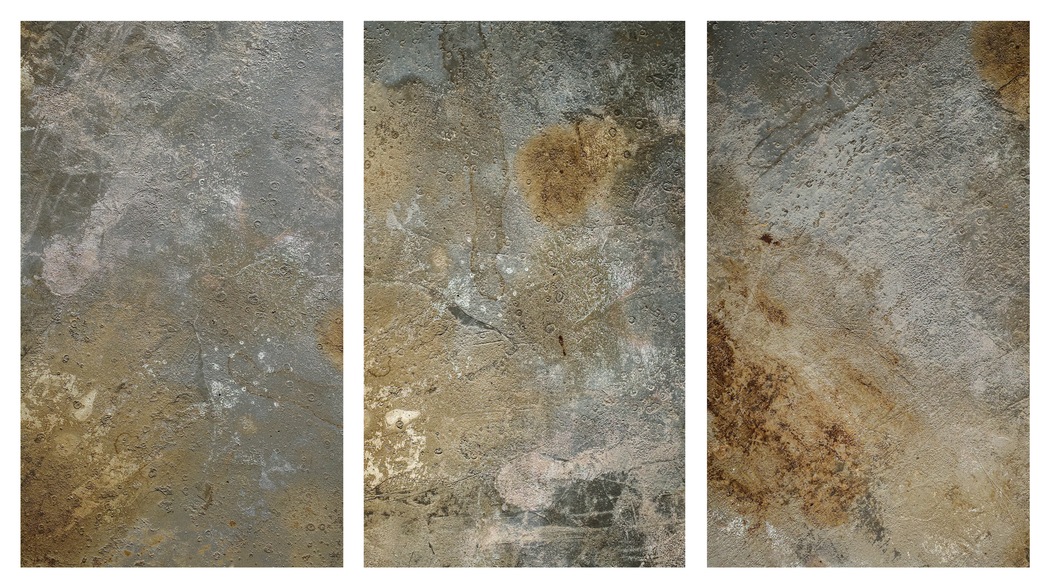Robert Claus
Year of birth: 1967, which makes me a bit of a late bloomer, I guess 😉
Where do you live: In the San Francisco Bay Area, but not in the hip and exciting part of it.
Your education: I look at this as a work in progress—I started in a German primary school, spent some time learning interesting things in France and England (albeit not always at school), and then completed the act with a university degree in languages. Of course, I had actually wanted to become a composer-painter-poet, but never mind.
Describe your art in three words: Context. Perception. Engagement.
Your discipline: Digital photography, with great hopes for branching out into more non-traditional practices.
Website
 Robert Claus, Three Triptychs, Combined, 2024
Robert Claus, Three Triptychs, Combined, 2024
Your journey into photography started with a childhood love for the medium, but you later returned to it after attending a David Hockney retrospective. Can you share what it was about Hockney’s work that reignited your passion for photography?
I went up to the De Young in San Francisco to see this show, which was absolutely staggering. It showed works in practically every medium, from traditional drawings to digital paintings done on iPad. What captivated me most were two works in particular: a video installation which placed the visitor in the middle of four huge screens arranged in a square. Each screen showed footage of a clearing in summer, fall, winter, and spring at the same time. I had never experienced anything like it!
And then there were these charcoal drawings he had done of a path in the same wood, again showing the same location throughout the seasons. They were drawn so perfectly that I thought they were photographs at first. But what really resonated with me was that he had slowed right down, chosen one location, and decided to return and portray it over and over again.
It was an absolute revelation for me! It took a few years before I felt ready to put that into practice myself, but was very glad when I finally did. It led to many projects like Stevens Creek Reservoir, for which I shot a local lake using only a smartphone, and working only in black and white. Learning to slow down taught me so much—from learning how to see, to reading and evaluating possible compositions to framing up the shot, and post-processing. This principle influences my practice to this day.
You have a background in translation, music, and theater. How do these experiences influence your approach to photography and your artistic vision?
Photography, like translation, relies heavily on context. Words can have many meanings that are not clear until we see how that word is being used—until we see it in the intended context. Even simple words like “home” can have different meanings: a residential structure, a feeling, or perhaps a care facility of some kind. “Home” can also be used as a verb, as in “to home in” on something. Without the right context, I can’t understand, or translate that word.
The same holds true for music: I can play a particular chord, but unless I play one before and after, it has no real meaning—it doesn’t come from anywhere, and doesn’t go anywhere. In theater, what a character says or does only really makes sense when seen in the broader context of what happened before, and the action that will follow.
But photography as an art form—like drawing and painting—relies even more on context, because a photographer needs to decide what to exclude from the frame. The composition is defined just as much by what’s been left out of the image, as what is shown, because that omission is a conscious decision. And finally, photography translates a subject from a three-dimensional into a two-dimensional form.
During a class on serial photography I took earlier this year, I had to select and sequence a set of images into a series. So I took a bunch of macro shots I had taken of an old baking tray, and cropped them into circles—and suddenly, the pitted and scratched metal surfaces were gone, transformed into nine moons of Saturn instead, just by the way the images were framed!
 Robert Claus, Two Views of the Dam, Stevens Creek Reservoir, 2024
Robert Claus, Two Views of the Dam, Stevens Creek Reservoir, 2024
You mentioned creating polyptychs as a way to delve deeper into your subjects. What do you think this technique adds to your work compared to presenting a single, standalone image?
This is a new direction for me, that I began to explore recently, while I was taking that evening class I just mentioned. I think my basic philosophy here is that our perceptions are always partial, limited, and often faulty. For example, if I walk into a room, I will not see it all at once, it will reveal itself to me little by little, depending on where I look. And no matter how often I visit that space, I will never know it fully. So by taking “slices” of a scene or composition, and arranging them on top of blank, empty space, I’m trying to reflect that experience, as if to say “yes, there is something in this space, and it is part of this picture—we just can’t see it.”
Obviously there are countless ways of playing with this, and I’m very excited about what lies ahead—not least because it allows me to work at much larger scales than I could with just prints alone. Plus, it allows me to build entirely new narratives.
In your recent projects, you’ve explored still life, landscapes, and abstract compositions. Do you find yourself drawn more to one genre over the others, or do they each satisfy different creative needs?
That’s a great question! I will say that certain subjects and moods attract me more than others. I’ll take my camera with me when I go for a walk, because I might find something interesting to photograph along the way: that could be the color or shape of a building in a certain light, a mushroom somewhere in the park, or a piece of trash on a dried-up lakebed.
 Robert Claus, Studies of Debris, Stevens Creek Reservoir, 2023
Robert Claus, Studies of Debris, Stevens Creek Reservoir, 2023
What troubles me, are artificial distinctions imposed by a rigid taxonomy of genres—I’m much more interested in where the landscape ends, and the still life begins! Isn’t a photograph of a building just an over-sized still-life? I could shoot that mushroom to create a very non-representational image—would we be looking at an abstract or a still life, then? Maybe “abstract still-life” would be a more accurate moniker? One fan’s rock song is another listener’s pop hit. I think old Linnaeus has a lot to answer for… Robert Claus, Studies of Debris, Stevens Creek Reservoir, 2023
You describe using photography to transition into graphic design by layering and positioning images. How do you decide when an image should remain a photograph and when it should be further developed into a graphic composition?
As with polyptychs, this technique is new to me, and I’m continually exploring and developing it. It plays into key themes like context, genres, and influences from other art forms we’ve just looked at. The transition between “regular” photography and using photographs to create graphic compositions is very fluid—I think about it more in terms of a compositional technique that helps me build up an image and tell a story.
In general, when I go out to photograph, I already have some ultimate purpose in mind, like a series or book project I want to create, for instance. So if I’m interested in making a collage or polyptych, the decision gets made before I even set out, and I’ll usually concentrate on shooting subjects that might lend themselves well to such a graphic treatment. That said, I might also revisit existing images and see whether they might look good cut-up and reassembled into a very different composition altogether.
Can you discuss your experience learning from renowned photographers such as Ed Kashi and Gina Militia? How did these encounters shape your photographic style?
When I got back into photography, I needed a structured way of learning—and that’s what Gina provided most of all. She was an absolute pro, had a podcast, and taught an online community of photographers of all stripes and levels of experience. She really looked after us. She taught me how to shoot in manual, and always gave me the confidence to continue whenever I was ready to quit. I stayed with that group for three or four years, which really shaped the way I work to this day. But Gina’s thing was portrait and life-style work, so when I began to focus more on still-life, I left to pursue that. The other day I had a question, and thought “Gina would know the answer!” So I tried to get in touch—only to discover that she had passed away two years earlier. I was absolutely gutted, I couldn’t believe that she was gone! That experience made me treasure everything she had taught me even more. Gina had certain expressions like a “dook” of light, which meant just a touch of light, and when I work in Lightroom now, I can literally hear her in my head! 🙂
When I took a workshop with Ed Kashi at Stanford, that was a very different experience, because it was much shorter, of course, but very intensive and equally formative. Ed taught me the importance of editing, and he was very emphatic about the use of that term. He insisted (and I totally agree with him) that editing is not about post-processing images in Lightroom or wherever, but about making a selection. It’s about finding and identifying the strongest images by removing all the others. As every songwriter, poet, and photographer knows, this is incredibly hard—but it takes their work to the next level. I think taking great care to edit their work shows that artists are serious about their craft. “You’ve got to kill your babies” was Ed’s mantra, and although it sounds horrible, he was totally right. It is something I constantly remind myself of, and an absolutely vital part of my learning journey.
 Robert Claus, Sonic Landscape, 2024
Robert Claus, Sonic Landscape, 2024
Many of your works evoke a sense of solitude and stillness. Is this a deliberate theme in your work, or does it arise naturally from your choice of subject matter?
Yes, absolutely!!! If viewers get that feeling of quietude from my images, I’ve done my job! 🙂 For me, art is all about the interaction between the work and the audience, and that is always a solitary, one-on-one experience, even if I’m standing in a crowded museum space, or I’m in the audience of a sold-out show. Naturally, subjects like landscapes and still-lives lend themselves to a more contemplative, down-tempo way of experiencing them, but I would say that’s more of a by-product in my work. I try to find subjects that captivate me and draw me in, that demand questions rather than answers, if that makes sense. It’s more about being intrigued, engaged, and wanting to discover more than being given a statement.
Art is that intangible experience that happens when I make my images, and when someone looks at them. In between, they are just files or prints—totally latent, and worthless. A painting that isn’t being shown is just a dirty canvas. It’s not until someone actually looks at and engages with it that the piece becomes something more, something special, something that imparts a little bit of itself—and its maker—to the viewer. The same holds true of music, of theater, sculpture—any art form, really. So yes, I create my pictures on my own, and any viewer will see them on their own, so there is a certain solitude baked into the creative act and its consumption by definition. The fact that the subjects I shoot often feed that experience is just icing on the cake 🙂

Leave a Reply